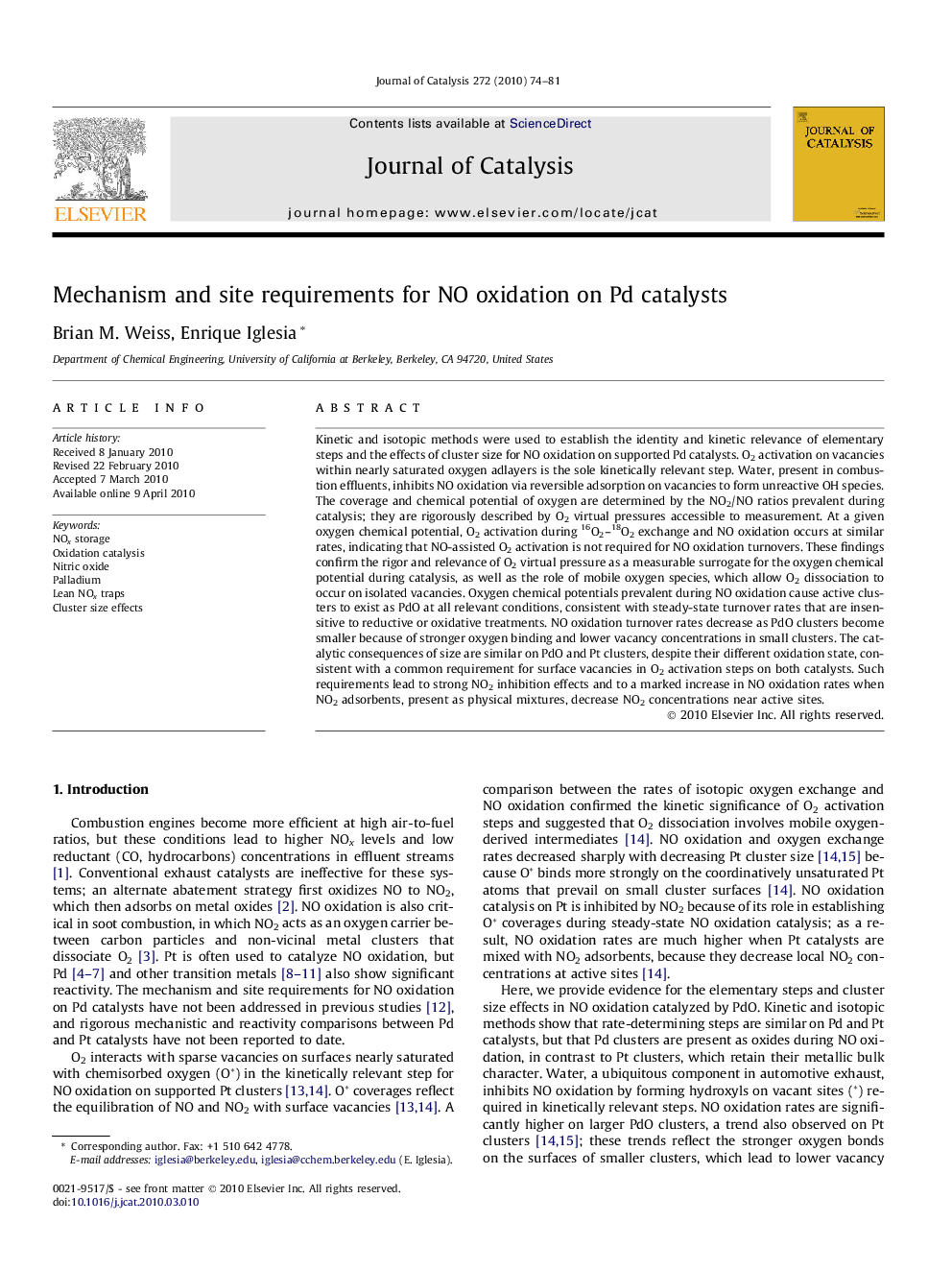| کد مقاله | کد نشریه | سال انتشار | مقاله انگلیسی | نسخه تمام متن |
|---|---|---|---|---|
| 62295 | 47632 | 2010 | 8 صفحه PDF | دانلود رایگان |

Kinetic and isotopic methods were used to establish the identity and kinetic relevance of elementary steps and the effects of cluster size for NO oxidation on supported Pd catalysts. O2 activation on vacancies within nearly saturated oxygen adlayers is the sole kinetically relevant step. Water, present in combustion effluents, inhibits NO oxidation via reversible adsorption on vacancies to form unreactive OH species. The coverage and chemical potential of oxygen are determined by the NO2/NO ratios prevalent during catalysis; they are rigorously described by O2 virtual pressures accessible to measurement. At a given oxygen chemical potential, O2 activation during 16O2–18O2 exchange and NO oxidation occurs at similar rates, indicating that NO-assisted O2 activation is not required for NO oxidation turnovers. These findings confirm the rigor and relevance of O2 virtual pressure as a measurable surrogate for the oxygen chemical potential during catalysis, as well as the role of mobile oxygen species, which allow O2 dissociation to occur on isolated vacancies. Oxygen chemical potentials prevalent during NO oxidation cause active clusters to exist as PdO at all relevant conditions, consistent with steady-state turnover rates that are insensitive to reductive or oxidative treatments. NO oxidation turnover rates decrease as PdO clusters become smaller because of stronger oxygen binding and lower vacancy concentrations in small clusters. The catalytic consequences of size are similar on PdO and Pt clusters, despite their different oxidation state, consistent with a common requirement for surface vacancies in O2 activation steps on both catalysts. Such requirements lead to strong NO2 inhibition effects and to a marked increase in NO oxidation rates when NO2 adsorbents, present as physical mixtures, decrease NO2 concentrations near active sites.
O2 activation on scarce vacancy sites in PdO clusters limits NO oxidation rates. The kinetic relevance of these vacancies causes turnover rates to increase as oxygen binding weakens with increasing cluster size and as adsorbents deplete NO2 near active sites.Figure optionsDownload high-quality image (76 K)Download as PowerPoint slide
Journal: Journal of Catalysis - Volume 272, Issue 1, 25 May 2010, Pages 74–81